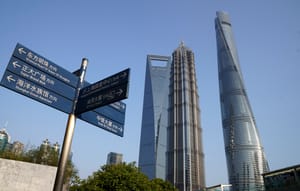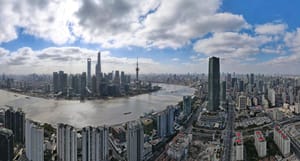Recently, in conversations with professors and students from Harvard Business School and the Harvard JFK School of Government, I found that many still view the “China dividend” through a lens shaped decades ago. Understandably, such outdated perceptions can no longer capture the full, complex reality of today’s China.
So, what does the “China dividend” really mean now? And where did some Westerners get it wrong? It’s a question worth unpacking, and at least four dimensions deserve closer attention.
Labor Dividend: China’s First Surge
At the beginning of the reform and opening-up era, China’s primary advantage was its massive pool of low-cost labor. In an incredibly short time, the country became the world’s largest manufacturing base and kept its labor costs low for more than a decade.
Two factors helped China make it. One is the almost unlimited supply of agricultural labor, which later shifted into factories. Another is the “dual external dependence model” (imported materials + export markets).
However, some Westerners get it wrong here. They are mistakenly stuck on this early version of “China dividend” narratives. They believe China’s only strength lies in “mining human labor” for labor-intensive industries—and assume that without Western capital and technology, China’s economy would collapse.
Skilled Labor Dividend: Making of the World’s Largest Manufacturing System

Over time, China moved beyond low-end labor and unlocked a second layer of potential: the skilled labor dividend, contributing to the construction of the world’s largest manufacturing ecosystem. From electronics to heavy chemicals, countless industrial clusters now form deeply interconnected supply chains. No other country can match China’s speed in responding to market demand while maintaining cost-performance at scale.
This industrial strength—especially in computers, smartphones, and automobiles, has become China’s key economic moat, even as input costs rise.
Western observers who understand this layer are rare. Some have become ardent China optimists, amazed by the depth and durability of its manufacturing power. Others, alarmed by its resilience, have turned into China skeptics, warning that without a “China+1” strategy, Western industries could be left out in the cold.
The Engineer Dividend: Moving Up the Value Chain

Now, a third phase is emerging—the engineer dividend. China is rapidly building the world’s largest clusters in new-era manufacturing and production-oriented services.
Nearly every strategic sector linked to “new-quality productive forces” is being led or co-led by China: renewable energy, electric vehicles, drones, batteries, robotics, and more. Even in “softer” areas like biotech, AI, gaming, and animation, major breakthroughs are on the horizon.
And yes, China is making solid strides in areas long considered bottlenecks —semiconductors and large aircraft—where breakthroughs are now seen as a matter of time.
The reason is simple: these cutting-edge industries are engineering-intensive. This character means the mere accumulation of labor or capital is not enough—even “capital plus labor” isn’t enough. What’s needed is a vast number of real-world application scenarios, where technologies can be tested, refined, and iterated rapidly through trial and error. Under this rubric, only China, with its massive market and state-supported coordination, offers such an environment at scale.
Western nations may have capital and global talent, but they lack comparable opportunities for wide-scale deployment. This puts them at a structural disadvantage in emerging industrial technologies. Those in the West who realize this have mostly accepted the reality: in the foreseeable future, the only sustainable strategy is cooperation with China.
The Scientist Dividend: The Next Frontier
Looking ahead, China is on the brink of unleashing a scientific dividend, with the potential to spawn entirely new industries that reshape the future of humanity.
Consider this: in the latest Nature Index rankings, 9 out of the world’s top 10 research institutions are Chinese. This surge reflects the resonance between China’s large-scale scientific talent pool and unprecedented levels of R&D investment. With tens of millions of researchers and trillions of dollars in funding, China is producing a massive volume of scientific output.
Its capabilities in basic research and natural sciences are rising rapidly. In the coming decades, breakthroughs in math, physics, chemistry, biology, and computer science are more likely to emerge from China—true “zero-to-one” innovations that cannot yet even be clearly defined.
What’s most remarkable is that these four dividends—labor, skilled labor, engineering, and science—are not isolated or in conflict. They work in collaboration.
Scientific discoveries become products through engineering. These products are mass-produced through industrial ecosystems. And all of it is ultimately driven by human effort at every level.
This creates a seamless value chain—from cutting-edge innovation to everyday consumption—powered by over a billion people, guided by socialism, and accelerated by industrial and digital transformation.
And this, perhaps, is the true meaning of the “China dividend”: a unique, multi-layered force that enables China to contribute profoundly to the future of human progress.
This article was originally published in Chinese at Guancha.cn.
Mao Keji is a PhD candidate at the School of Social Science, Tsinghua University, where he researches international relations, South Asia, and Sino-Indian relations. The views don't necessarily reflect those of BeijingReviewDossier.







